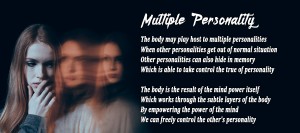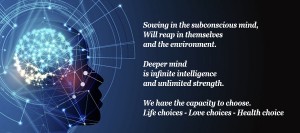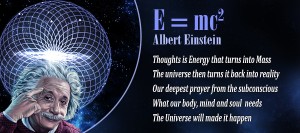From the Middle Ages onward, the existence and nature of the soul and its relationship to the body continued to be disputed in Western philosophy. To Benedict de Spinoza, body and soul formed two aspects of a single reality. Immanuel Kant concluded that the soul was not demonstrable through reason, although the mind inevitably must reach the conclusion that the soul exists because such a conclusion was necessary for the development of ethics and religion. To William James at the beginning of the 20th century, the soul as such did not exist at all but was merely a collection of psychic phenomena.
Just as there have been different concepts of the relation of the soul to the body, there have been numerous ideas about when the soul comes into existence and when and if it dies. Ancient Greek beliefs were varied and evolved over time. Pythagoras held that the soul was of divine origin and existed before and after death. Plato and Socrates also accepted the immortality of the soul, while Aristotle considered only part of the soul, the noûs, or intellect, to have that quality. Epicurus believed that both body and soul ended at death. The early philosophers adopted the Greek concept of the soul’s immortality and thought of the soul as being created by God and infused into the body at conception.
Quality of life should not be confused with the concept of standard of living, which is based primarily on income.
Instead, standard indicators of the quality of life include not only wealth and employment but also the built environment, physical and mental health, education, recreation and leisure time, and social belonging. Also frequently related are concepts such as freedom, human rights, and happiness. Since happiness is subjective and difficult to measure, other measures are generally given priority. It has also been shown that happiness, as much as it can be measured, does not necessarily increase correspondingly with the comfort that results from increasing income.
Standard of living should not be taken to be a measure of happiness. Also sometimes considered related is the concept of human security, though the latter may be considered at a more basic level and for all people.
The first classification of the individuals of the human race is that of Quality. Independent of the various temperaments, although in a way related to them, we find the various degrees of Quality manifested by different individuals. “Quality” may be defined as the “degree of fineness.” It is that which we call “class”.
The human being of the highest Quality is essentially fine-grained, possessed of fine feelings, refined natures, high tastes, and manifest the signs of true natural refinement and culture, which cannot be successfully imitated by those who have acquired merely in an artificial manner from the outward polish.
In the lowest of quality degree, we find individuals showing all the outward signs of being coarse-grained, vulgar, of low tastes, brutal instincts, and manifesting the signs of lack of refinement and culture. Persons of low Quality are found in all walks of life.
Quality is a matter of “soul,” and not of wealth, education or material advantages.
The Outer Form of Quality is shown by the relative fineness of general structure, and by the general form, appearance, manner, motion, voice, laughter, and more than all by that indescribable impression of “fineness” and “distinction” which they produce upon observing persons with whom they come in contact.
Quality is a very different thing from intellectuality or morality.
A high-Quality person may be immoral and not especially intellectual, although there is almost always a keenness of perception, and almost intuitive recognition, in these cases, the immorality is generally lacking in coarseness and is usually connected with the perversion of the esthetic faculties. In the same way, the person of low Quality often may be moral according to the code, but will be coarse in the manifestation of that virtue, and may possess a certain low cunning which with many persons passes for intellect and “brains.”
Mental Qualities
We now approach the subject of the several particular mental qualities, and the groups thereof, both in the phase of their inner states and that of their outer form. In the consideration of both of these phases, we must avail ourselves of the investigations and researches of the old phrenologists who cleared a path for all who follow. Although many of the phrenological theories are rejected by modern psychologists and biologists, nevertheless their work established a firm foundation for the science of the study of the brain and its functions. And to Gall and his followers, we are indebted for the discovery and teaching that the activity and development of the several mental qualities or faculties manifest in the outer form in the shape of the skull.
The general principles of phrenology may be briefly stated as follows:
- The Brain is the organ of the mind.
- The mind is not a single entity or power but has several faculties, stronger or weaker, which determine the character of the individual.
- That each faculty or propensity has a special organ in the brain.
- The size of the brain (the quality being equal) is the true measure of power.
- There are several groups of faculties, and each group is represented by organs located in the same region of the brain.
- The size of the organ is indicated by the appearance and size of the skull immediately over the region of the organ.
- The Quality and Temperament of the organization determine the degree of vigor, activity, and endurance of the mental powers.
Some investigators of brain development and action hold that while certain mental states manifest in outer form on portions of the skull, the phenomenon is due to the action of the cranial muscles rather than to the fact of the localization of special faculties that each mental state is associated with certain actions on the part of certain cranial muscles which in turn exert a modifying effect upon the shape and size of the skull.
As Erbes states it ” In so far as the neural matter is dependent upon the cranial muscles aside from the sensory stimuli, so far, likewise are the psychic manifestations, through tongue or limb, modified by variations in those muscles that, after their creative task is done, assume a vasomotor control over their respective areas.”
They are agreed upon the fact that certain areas of the brain are associated in some way with certain mental states; and that these brain areas register their relative activity upon the areas of the skull adjacent thereto; and that the activity and power of each brain area, or faculty, is denoted by the size of the associated skull-area. Thus, the outward facts claimed by phrenology are admitted, while their theories of causes are disputed.
In considering the subject of the Outer Form associated with the Inner State of Human Nature, we shall merely claim that mental states manifest in outer form in the shape and size of the head; and that certain areas of the skull are thus associated with certain mental states, the size and shape of the former denoting the degree of activity of the latter.





